ESSAYS
The series of essays by writer and publisher Gib Wettenhall will explore knotty environmental problems and inconvenient Indigenous issues ignored by the mainstream. There would seem to be much we could learn from what came before us.
Adopting animist values of custodianship and reciprocity could aid in modifying the worst excesses of the consumer capitalist road we are blindly following.
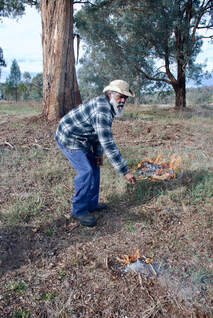 > Ceremonial fire burner, Uncle Rod Mason, lights up at Wooragee Landcare cultural burn.
> Ceremonial fire burner, Uncle Rod Mason, lights up at Wooragee Landcare cultural burn.
CULTURAL BURNING AS AN AGENT OF RENEWAL
Posted in March 2020 the essay provides an example of Indigenous cultural burning via a Landcare group and posits its use by landowners as an alternative environmental approach to large scale 'hazard' reduction burning.
The Great Reads newsletter of the Griffith Review journal highlighted it in May 2020; and it appeared in Steve Murphy's Recreating the Country blog in February 2020.
A short version is in the winter 2020 edition of the Landcare Vic magazine – click here
Posted in March 2020 the essay provides an example of Indigenous cultural burning via a Landcare group and posits its use by landowners as an alternative environmental approach to large scale 'hazard' reduction burning.
The Great Reads newsletter of the Griffith Review journal highlighted it in May 2020; and it appeared in Steve Murphy's Recreating the Country blog in February 2020.
A short version is in the winter 2020 edition of the Landcare Vic magazine – click here
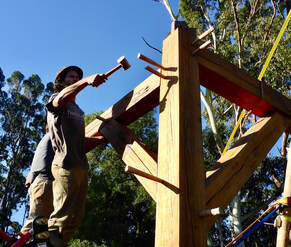
BUILDING THE OLD, SLOW WAY WITH GREEN WOOD
Localism ruled in the pre-industrial era as did working with wet, green wood. Craft skills were valued and the whole process of relying on local resources and expertise allowed artefacts of beauty to arise that were rooted in place. Like the pegged green wood shed and the drop slab hut, both designed and constructed by wood craftsman Lachlan Park.
The first version of the essay in building a green wood shed next to the Wombat Forest on top of the Divide was commissioned for the National Museum of Australia’s ‘everyday futures’ website with photographs by Alison Pouliot – visit
https://everydayfutures.com.au/project/raising-green-wood-shed
Localism ruled in the pre-industrial era as did working with wet, green wood. Craft skills were valued and the whole process of relying on local resources and expertise allowed artefacts of beauty to arise that were rooted in place. Like the pegged green wood shed and the drop slab hut, both designed and constructed by wood craftsman Lachlan Park.
The first version of the essay in building a green wood shed next to the Wombat Forest on top of the Divide was commissioned for the National Museum of Australia’s ‘everyday futures’ website with photographs by Alison Pouliot – visit
https://everydayfutures.com.au/project/raising-green-wood-shed
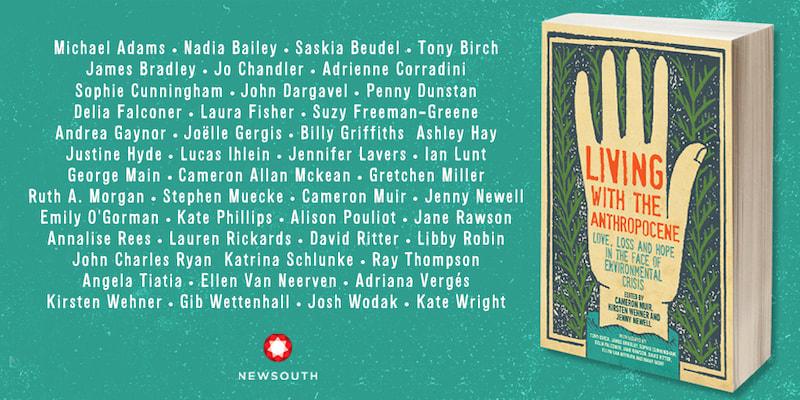
In October 2020, a condensed version of the essay in a chapter on sustainable pathways was part of a collection Living with the Anthropocene, published by New South – read this version of Gib's green wood essay here The book consists of a collection of essays voicing the question: how will we adapt to living in the Anthropocene? Critically acclaimed in The Age as a Pick of the Week – see review here
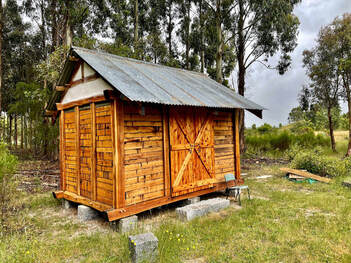
In 2022, Lachie completed an updated 21st century version of the traditional Aussie drop slab hut made from local, common native timbers for Ballarat Region Treegrowers at the ImLal biorich plantation in Lal Lal, SW Victoria.
An essay on the biorich website celebrates localism and the old, slow ways and demonstrates how together they combine to lower carbon emissions – visit Going local, slow and carbon low
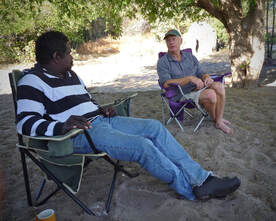
REIMAGINING AND REIVENTING OUR CULTURE
“The world is being undone before us,"argues writer Richard Flanagan. The horrific bushfires of Black Summer and now the COVID-19 pandemic are harbingers of a planet under pressure. I agree with Flanagan that if Australians do not reimagine and reinvent our culture, then we will be undone too.
We must fill the silent spaces of the past and acknowledge a far older and richer culture than the Western civilisation brought to Australia by the British.
A classic primer of animism and ecological philosophy well worth reading is The Spell of the Sensous by David Abram.
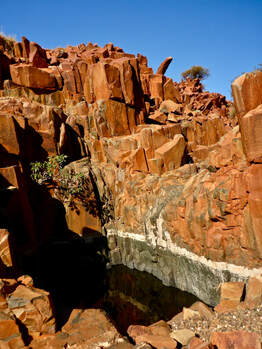 > A standing stone above a waterhole at Murujuga, Burrup Peninsula.
> A standing stone above a waterhole at Murujuga, Burrup Peninsula.
ABORIGINAL STANDING STONES
Who knows about Aboriginal standing stone arrangements? The author of the Australian History of Standing Stones seems never to have heard of them. Just as important as rock art, little is known about them. Yet they were once everywhere as landscape markers, guarding sacred sites, standing in for ancestor beings and forming ceremonial circles.
More anthropological and archaeological research is urgently needed while the elders remain who can interpret their meaning and bring them alive.
Who knows about Aboriginal standing stone arrangements? The author of the Australian History of Standing Stones seems never to have heard of them. Just as important as rock art, little is known about them. Yet they were once everywhere as landscape markers, guarding sacred sites, standing in for ancestor beings and forming ceremonial circles.
More anthropological and archaeological research is urgently needed while the elders remain who can interpret their meaning and bring them alive.
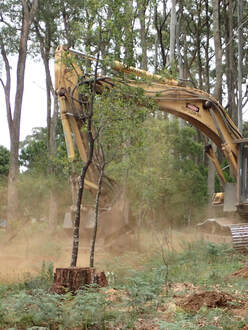
A BRIEF HISTORY OF THE SLAUGHTER OF TREES
Every civilisation once began with the sound of an axe and ended when the supply chain of timber was exhausted. The fate that befell the Wombat Forest in the gold rush era has been echoed many times over in the annals of human history.
Every civilisation once began with the sound of an axe and ended when the supply chain of timber was exhausted. The fate that befell the Wombat Forest in the gold rush era has been echoed many times over in the annals of human history.
|
|
em PRESS Publishing specialises in Australian landscapes and their historical and cultural contexts. em PRESS is particularly interested in fusing Indigenous, European settler and nature-based readings of the landscape to provide a truer view of our country.
|
